Today, with the help of medicine, you can recover from almost any disease. But during the Middle Ages, doctors were powerless even in the face of the most innocent diseases. In that distant era, epidemics claimed tens of thousands of lives (even during war and famine, fewer people died). The cause of mass mortality was not always the well-known plague; often people died from simple infections such as prickly heat. In medieval England, death from this disease was common.
What is known about this disease?
So, heat rash, what is it? In medieval England, people died en masse from this disease, but in fact it is not such a serious disease. Miliaria is a skin disease that manifests itself in the form of dermatitis due to increased sweating. The rash consists of small red blisters, which are often accompanied by swelling. In general, this irritation is characteristic of young children, although it also occurs in adults, as it was in medieval England. Miliaria usually accompanies heart disease, endocrine system disorders, and can also appear as a result of obesity.
Read more about the causes of prickly heat
This type of rash occurs as a result of impaired evaporation of sweat from the surface of the skin.
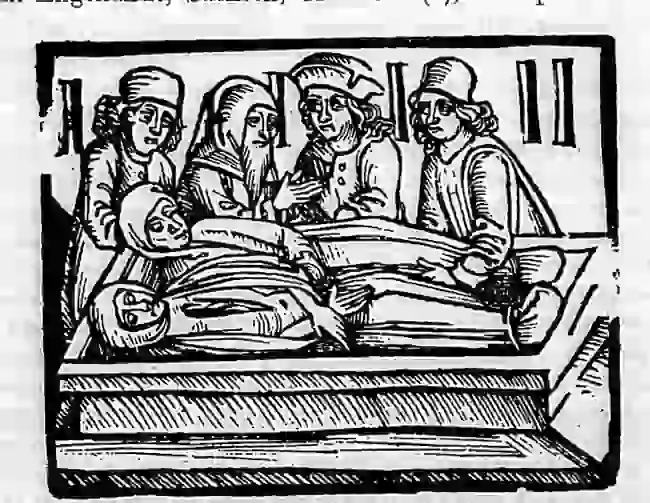
But the cause of increased sweating can be such ailments and conditions as:
- Cardiovascular diseases.
- Disturbances in the functioning of the endocrine system, diabetes mellitus.
- Excess body mass index.
- Heat.
- Using cosmetics and fatty creams in the heat.
- Strong physical activity.
- Stay in an unventilated and hot room.
- Out-of-season clothing made from fabric that does not allow air to pass through.
- Disease of the nervous system.
- Hot climate.
- Failure to observe basic hygiene.
The last point, perhaps, became fatal for the inhabitants of medieval England. Miliaria at that time appeared due to the fact that people walked for a long time in clothes wet with sweat or wore shoes that had poor contact with the air.
English epidemic
The heat rash first appeared in medieval England in 1485. This epidemic broke out periodically for almost a century. By a strange coincidence, the heat rash manifested itself as soon as Henry Tudor came to power. Less than two weeks have passed since the beginning of his reign, and a strange epidemic has already claimed several thousand lives. For the Tudor dynasty, this became a fatal sign: as soon as they took over the ruling elite, the prickly heat quickly spread throughout the entire territory of medieval England.
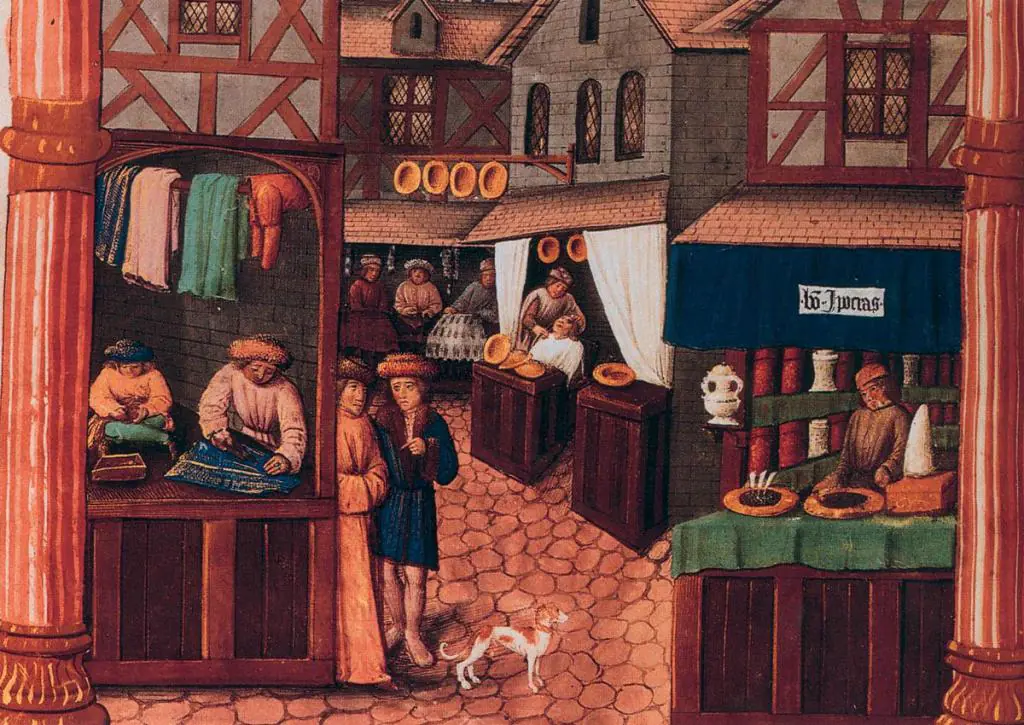
“No chance of recovery” - this is exactly the description that can be given to the disease prickly heat in the Middle Ages. As soon as a person became a victim of an epidemic, he was automatically considered dead. Of course, treatment attempts were made, but at that time they did not bring the desired results.
Sweating fever
Miliaria was accompanied not only by skin dermatitis, but fever was always its constant companion. As a result, this disease began to be called the English sweating fever; it returned to England 5 times, taking new lives with it.
During the reign of Henry VIII, death from sweating fever was terrible and painful. There were even rumors among the population that as long as the Tudor dynasty ruled, the disease would not leave England. In 1528, the epidemic broke out with such force that the ruler had to dissolve the court and leave the country. The last pandemic in England dates back to 1551.
Versions
As you know, in medieval Europe more than half of the population died from the plague, although its cause had long been found. But what triggered the English sweating fever remains a secret even today. Scientists can only speculate.
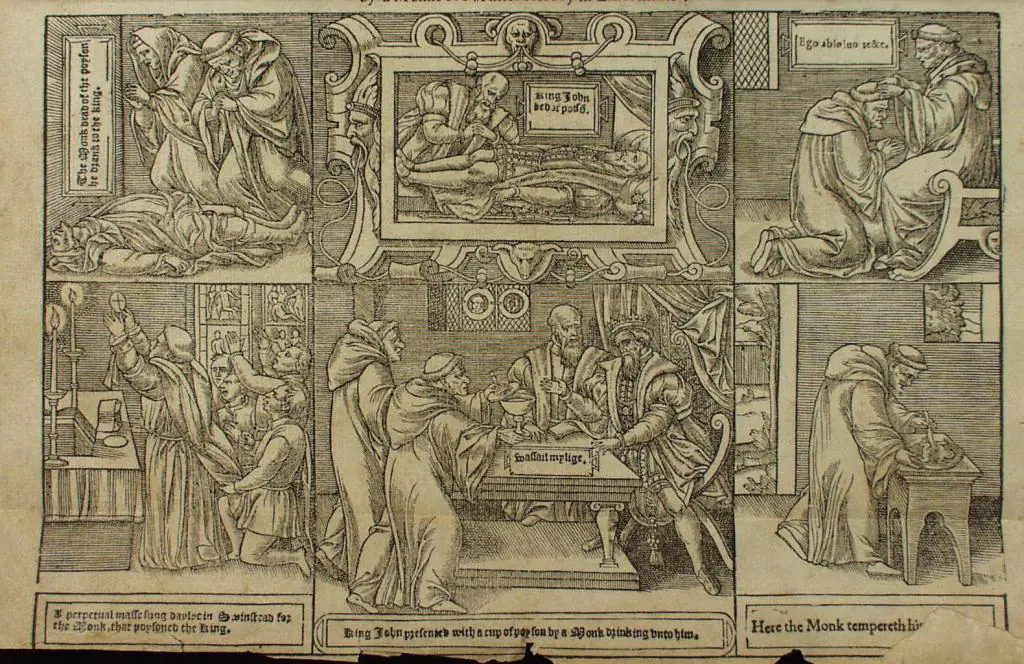
Oxford and Cambridge suffered the most from the epidemic, where more than half the population died from the disease. What were the causes of the prickly heat disease in England in the 16th century? Is this something unknown (like fate or divine punishment) or a type of unstudied virus? So far, scientists have put forward only versions:
- In ancient times, the main sources of infections and epidemics were complete unsanitary conditions. Already in the Middle Ages, the air in England was contaminated with toxic fumes, because people did not particularly care about disposing of waste (usually it decomposed peacefully in the doorways). The contents of the chamber pots poured out of the windows without a twinge of conscience, and muddy streams flowed through the streets, poisoning the soil. Because of this disregard for the environment, even the water in the wells was unfit for consumption. Naturally, such conditions could cause many serious diseases, not just prickly heat.
- There is also an opinion that in medieval England, prickly heat was a disease caused by the bites of lice and ticks, which even today carry dangerous infections.
- It was also believed that prickly heat was caused by hantavirus (a disease that affects rodents and is dangerous to humans). True, the scientific community has not proven this.
- The epidemic could have been caused by testing of new bacteriological weapons, or the prickly heat was simply a type of influenza.
- There is a version that the heat rash developed due to the British addiction to ale (an alcoholic drink that was popular during the reign of Henry VIII).
- And, of course, the Tudor dynasty is considered to be to blame for everything, in particular the ruler Henry 8, who appeared on the territory of England with an army of French legionnaires, thereby laying the foundation for the spread of a new disease - prickly heat.
Scientists of the Middle Ages believed that the English sweating fever appeared due to the damp climate, the manner of dressing warmly during the hot season, earthquakes and the position of the planets. Of course, most of these assumptions have no logical basis.
How did disease manifest itself in the Middle Ages?
There is an opinion that prickly heat in ancient England was a disease from which there was no escape. Today, prickly heat is not considered something dangerous, but in those distant times few people escaped from it. The first symptoms began to appear immediately after infection. The patient began to experience severe fever, chills and dizziness. All this was accompanied by unbearable pain in the neck, shoulders, arms, legs and head. After a while, the patient developed a fever, he began to delirium, the heartbeat quickened, and the person began to be tormented by unbearable thirst. At the same time, the patient experienced profuse sweating.
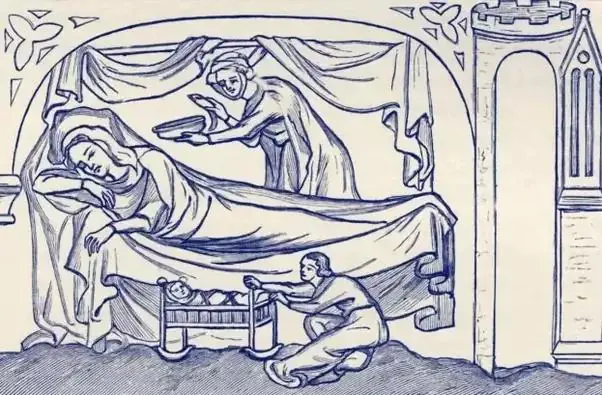
In most cases, the heart simply could not withstand such a load, but if a person infected with prickly heat managed to survive, then a rash appeared on his body.
Types of rash
The rash that appeared on the body during prickly heat was of two types:
- In the first case, these were scarlet-like scaly spots. In general, other than general discomfort and itching, they did not cause any problems.
- In the second case, hemorrhagic blisters could be observed, which bled upon opening.
Dangerous during illness was the appearance of drowsiness. The patient was not allowed to sleep, because if he fell asleep, he would not wake up again. If a person remained alive for 24 hours, then he could recover.
Immunity and treatment
Treatment of prickly heat in medieval England seemed possible, although the method was far from medicinal. Doctors of that time insisted that the room should have a moderate and constant temperature, the patient should be dressed according to the weather, he should not be cold or hot, only in this way could a person increase his chances of recovery. It was a mistake to think that you need to sweat - this only aggravated the condition.

It is worth noting that immunity was not developed against prickly heat; a recovered person could become ill again and more than once. In this case, he was doomed - the damaged immune system could no longer recover.
Victims of the prickly heat
Typically, the epidemic broke out in the warm season and selectively affected people. Surprising is the fact that most of the victims of prickly heat were healthy and strong people from wealthy families. It is extremely rare that women, children, old people and weak men suffered from this disease. If they were struck by this disease, they dealt with it surprisingly quickly and easily.
It is worth noting that foreigners and people from the lower class of the population were spared the disease, but noble and healthy townspeople died away after a few hours.
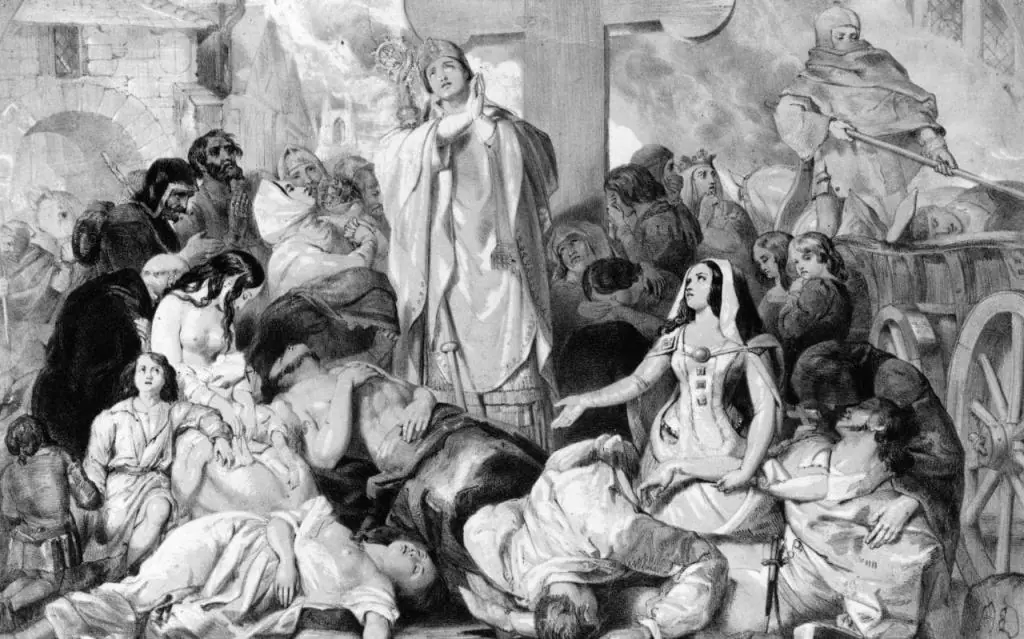
Six aldermen, three sheriffs, two lords, descendants of the royal family, Crown Prince Arthur of Wales, representatives of the Tudor dynasty, the favorite son of Henry VIII and the sons of Charles Brandon - all became victims of the sweating sickness. This disease took people by surprise. This is why it is said that in the Middle Ages the prickly heat disease was an almost incurable disease. No one knew about the causes, or the correct treatment, or who would become the “victim” next time. Someone who was full of strength yesterday could be dead the next day. Even today, the heat rash epidemic has left many unanswered questions.
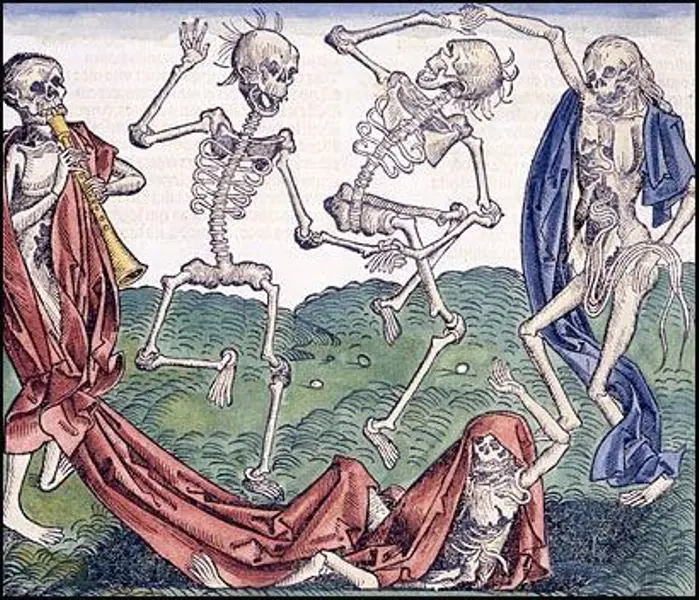
The French philosopher Emile Littre correctly noted:
Suddenly, a deadly infection emerges from an unknown depth and with its destructive breath cuts off human generations, like a reaper cutting off ears of corn. The causes are unknown, the effect is terrible, the spread is immeasurable: nothing can cause greater alarm. It seems that the mortality rate will be limitless, the devastation will be endless, and that the fire that breaks out will stop only due to lack of food.
The last time the prickly heat epidemic appeared in the world was in 1551. Afterwards no one heard from her, she disappeared as suddenly as she appeared. And what we call prickly heat today is radically different from that terrible illness that, with manic predilection, preyed on healthy and vibrant people.
Modern medicine does not stand still and nowadays you can recover from almost any disease. However, in the Middle Ages, medicine was powerless against many even completely innocent diseases. Epidemics claimed tens of thousands of lives, more than wars and famines. One of these insidious diseases was prickly heat. Death from the prickly heat was common in Medieval England.
The sweating sickness in medieval England was associated with a high mortality rate. More than half the population died from the epidemic, including members of royal dynasties. The causes of the disease still remain a mystery.
English prickly heat
The appearance of the English prickly heat was recorded in 1485. The heat rash epidemic broke out repeatedly for 70 years. The emergence of the heat rash in the Middle Ages began during the reign of Henry 8, which was a bad sign for the Tudors. No more than two weeks had passed since the appearance of King Henry, but a disease called the sweating sickness had already claimed several thousand lives and continued to progress. With the coming to power of the Tudor dynasty, the heat sickness spread very quickly throughout England.
The disease, prickly heat in the Middle Ages, left virtually no chance of recovery. What disease was called prickly heat? What danger to a person and threat to his life did it bring? In the Middle Ages, prickly heat was a disease that was accompanied by fever. It referred to skin diseases, which are characterized by the appearance of small blisters with profuse sweating, and denoted an infectious disease. The disease was also called English sweating fever. The population of medieval England suffered greatly from this disease. Over the course of 70 years, the epidemic returned to the country 5 times, taking with it new lives.
The peculiarity of the pandemic during the time of Henry the Eighth was that death from the prickly heat disease was terrible and painful. There were rumors that Henry Tudor was to blame for the spread of the heat rash and that as long as the Tudors ruled, the disease would not leave England. In 1528, the sweating sickness epidemic in England broke out with such force that during another severe fever, Henry 8 was forced to dissolve the court and leave England. Outbreaks of mass disease were last recorded in 1551.
In medieval Europe, more than half the population died from a plague called the Black Death. The cause of this epidemic was found, but what was the causative agent of the English sweating fever could not be established. For many years, medieval doctors studied this disease.
When and why did the epidemic start
The cities of Oxford and Cambridge suffered the most from the heat rash. Half the population died from the disease. Why did the disease of the 15th and 16th centuries arise and rapidly spread in England, claiming so many lives?
Some versions of the disease:
- dirt and unsanitary conditions in the old days were the main sources of infection and the beginning of epidemics. The air in England in the Middle Ages was polluted with toxic fumes. Heaps of waste and the contents of chamber pots were thrown through the window. Muddy streams flowed through the streets, poisoning the soil. The water in the wells was unfit for consumption. All these reasons provoked the appearance of infections, in particular, the development of a disease that was previously called prickly heat;
- according to one version, the cause of the disease in the 16th century was insect bites: ticks and lice, which are carriers of many diseases not only in the Middle Ages, but also now;
- for some time it was believed that a disease of the Middle Ages called prickly heat was caused by a hantavirus, but this has not been proven;
- there are suggestions that epidemics may be the results of tests of bacteriological weapons, and also that the prickly heat in medieval England is some kind of influenza;
- one of the reasons for the development of prickly heat during the reign of Henry 8 in England was the British addiction to their favorite alcoholic drink, ale;
- It is assumed that Henry 8 is to blame, who appeared with his army of French legionnaires, thereby giving rise to the spread of the disease of the century - prickly heat.
According to scientists of the Middle Ages, prickly heat arose due to the damp climate of England, due to the manner of dressing warmly in the warm season, and even due to earthquakes and the influence of stars and planets.
Characteristic symptoms of prickly heat
The first symptoms of prickly heat appeared immediately after infection. They began with severe fever, chills and dizziness. Symptoms of prickly heat were accompanied by severe pain in the head, neck, shoulders, arms and legs. Then fever, delirium, rapid heartbeat and thirst appeared. The sick person produced a large amount of sweat. If the heart could withstand such a load, and the patient managed to survive, a rash appeared on the chest and neck, spreading to the whole body.
Doctors have identified two types of rash:
- scarlatina-like, which is scaly spots;
- hemorrhagic, with the formation of blisters that bleed when opened.
The appearance of drowsiness was very dangerous. For this reason, it was impossible to let the patient fall asleep, since if the patient fell asleep, he would never wake up. As a rule, if a person remained alive for 24 hours, he quickly recovered. The only pain was caused by burst blisters on the skin.
Treatment of the disease seemed possible. If the temperature in the room was moderate and constant, and he was dressed in moderation so that it was not cold or hot, his chances of recovery increased. The idea of the need to sweat was wrong; this method contributed to a speedy death.
No immunity was developed against this disease. A patient who had the opportunity to recover could become ill again and repeatedly. In this case, the sick person was doomed. The immune system was damaged, and it could no longer recover.
Who exactly was affected by prickly heat?
Most often, outbreaks of the epidemic occurred during warm seasons. English sweat struck selectively. Mostly they were English. What is surprising is the fact that these were healthy, strong people from wealthy families. Rarely, the disease was transmitted to the elderly, women and children, as well as weak and thin men. If they did get sick, most of them easily endured the sweating fever and recovered quickly. The lower strata of the population, as well as foreigners who were in the country during outbreaks of the disease, were spared the epidemic. Conversely, noble and healthy city residents died in a matter of hours.
Notable people who suffered from prickly heat
The deadly disease did not spare noble and famous people. The epidemic claimed the lives of six aldermen, three sheriffs and two lords. The prickly heat did not pass by the royal families and their entourage. Rarely did the patient survive. The disease took Crown Prince Arthur of Wales to the next world. Representatives of the Tudor dynasty also died. A high-ranking victim of the epidemic was the future wife of Henry 8, Anne Boleyn, but she managed to recover. However, the only beloved son of King Henry 8 was not spared by the disease. Death also overtook the sons of the first Duke Charles Brandon.
The sudden attack of the disease took people by surprise, leaving numerous victims in its path. People full of strength and health died. The unknown disease brought with it many questions that still have no answers. The scale of the epidemic and powerlessness in the face of it kept people in constant fear for their lives.
The French philosopher Emile Littre wrote about this very correctly:
“...Suddenly, a deadly infection emerges from an unknown depth and with its destructive breath cuts off human generations, like a reaper cutting off ears of corn. The causes are unknown, the effect is terrible, the spread is immeasurable: nothing can cause greater alarm. It seems that the mortality rate will be limitless, the devastation will be endless, and that the fire that has broken out will stop only due to lack of food.”
The last outbreak of the sweating fever was seen in 1551. Since then, no one else has heard of this disease in the world. She disappeared without a trace as suddenly as she appeared. Is there any confidence that we will never encounter this terrible disease? Given the constant emergence of new viruses and epidemics, this possibility cannot be completely ruled out.
In the Middle Ages, not only the Plague claimed a huge number of lives. There were other diseases, incl. English prickly heat. They called it that because in the 16th century the English suffered from it, but the disease never spread beyond England and Scotland.
The occurrence of the first epidemic of the sweating sickness coincided with the coming to power of Henry 8. This was instantly considered not only a bad omen, but also blamed on him.
Symptoms appeared within a day of infection. The sick person began to experience severe chills, sweated in large quantities, and was tormented by thirst. A severe headache appeared, spreading to the neck and shoulder girdle. This state was accompanied by delirium.
If the patient did not die at this stage from cardiac arrest, then the next stage began, characterized by the appearance of a severe rash, first in the head and shoulders, and then throughout the body.
Severe weakness set in, and the patient felt sleepy. It was believed that a sick person should not be allowed to sleep; he might not wake up.
The disease was treated completely incorrectly. The patient was wrapped in numerous blankets and forced to sweat so that the infection would come out with sweat. But this did not help, on the contrary, it harmed.
According to the testimony of medieval writers and doctors, those who were in a well-ventilated area and in light clothing recovered more quickly. But cases of cure were still extremely rare.
It is surprising that the “sweating fever” affected mainly the British. The disease affected foreigners much less often. Women and children rarely fell ill. And if they did get sick, they had a better chance of recovery.
It is also unclear why it was mostly young men and boys in the prime of life who got sick.
It is generally accepted that the "English sweat" did not spread to other countries. However, the epidemic was also observed in Germany, albeit on a smaller scale.
Epidemics of the English sweating sickness occurred many times in England. And the disease could re-strike a person who had already had it. Immunity was not restored during this period and the patient was guaranteed to die.
The disease first appeared in 1485, and its last outbreak occurred in 1551. after which, the fever disappeared forever.
Modern medicine cannot establish for certain what exactly people were sick with in Medieval England.
But the prevailing version is that it was either one of the forms of influenza, or hantavirus, carried by voles, merged with another virus. Of course, the unsanitary conditions in which people lived did not promote health.
Residents of the Middle Ages rarely washed or changed clothes. Sebum and years of dirt accumulated on their bodies. Because of the hot, closed clothes, people sweated and “cooked” in their own sweat. This led to clogged pores and boils. Sewage flowed through the city streets, spreading unbearable odors and toxic fumes.
There is another version, an alternative.
Some scientists suggest that English fever is the world's first use bacteriological weapons. Due to the fact that mostly young Englishmen fell ill and died, thoughts arise that the enemy knew perfectly well what he was doing and specially developed such a selective disease.
But who had sufficient knowledge to create such a weapon?
And the British themselves and their neighboring countries were at such a level of knowledge that it would have been impossible to develop such a weapon.
In any case, if this option was seriously discussed, it did not gain much evidence. And without evidence, it’s all just “fantasy”.
On the other hand, microbiologist Edward McSwiegan suggested that the cause of the disease could be widespread spread of anthrax spores.
This option is more plausible and then it was possible that the spores were deliberately spread. But this does not explain the fact that in most cases young men were sick.
It’s interesting to read about medicines in the Middle Ages here: TOP 5 - The most effective medicines of Medieval Europe
If you liked the article and would like to read something else on this topic, please like and subscribe!
Then the Yandex bot will show you channel updates in the feed.



